Join 351 other subscribers
Recent posts
- Russell Quay, skiffle painter
- Easter under a cloud
- Mississippi to Cambridge – Marie Battle Singer
- Death, grief and Bacon
- Bow down mister!
- Eileen Agar’s fish tank
- Geoffrey Hill fails the bookcase test
- Nostalgia for no known face: the poems of Cameron Cathie
- Empathetic embodiment: the dance of Roger Pryor Dodge
- Out of the ordinary: the paintings of Mabel Layng
- Blast mask
- Depiphanies
- We look for the resurrection of the dead and the life of the world to come
- The silence of the baa-lambs
- Red white and blue retirement
Categories
Aerschot Performance Division animation Annesley Tittensor art artwork Burns Singer cartoons David Gascoyne fiction George Barker Gordon Wharton Helen Saunders Jack Clemo James Fox Jessica Dismorr Lawrence Atkinson music New Apocalypse photos poetry Robert Colquhoun Robert MacBryde sculpture T S Eliot Uncategorized Vorticism William Empson W S Graham Wyndham Lewis
Tags
abstraction Aleister Crowley anarchism art Arthur Berry Barbara Hepworth Blast British Masters Burns Singer Cambridge Charles Causley Christmas Christopher Logue Christopher Wood collage Dada David Bomberg David Jones decollage Delancey Drummond Allison Dylan Thomas Easter eBay Edwin G Lucas Ezra Pound Francis Bacon Gaudier-Brzeska George Woodcock Grace Pailthorpe Henry Treece Jacob Epstein James Joyce Jankel Adler John Minton John Shelton Keith Vaughan kitsch L S Lowry Mander Centre Mandergate Mervyn Peake Michael Ayrton neo-romanticism New Art Gallery Walsall painting Paul Nash Paul Potts photos Picasso poetry portrait public art RBS resurrection Reuben Mednikoff Robert Colquhoun Robert MacBryde Rock Form sculpture situationist Stanley Spencer Stephen Spender surrealism Tambimuttu Tate Britain The Two Roberts T S Eliot Vorticism W H Auden William Roberts Wolverhampton Wolverhampton Art Gallery W S Graham Wyndham LewisLinks
- Burma & Myanmar Philately My other other blog: Burma, stamps, postal history
- My artwork
- This Re-illuminated School of Mars – my other blog. Auxiliary forces and other aspects of a Nation under Arms in the Great War against France
Archives
- April 2021
- March 2021
- February 2021
- December 2020
- November 2020
- October 2020
- July 2020
- April 2020
- December 2019
- October 2019
- July 2019
- May 2019
- April 2019
- December 2018
- August 2018
- July 2018
- June 2018
- May 2018
- April 2018
- March 2018
- February 2018
- December 2017
- October 2017
- September 2017
- July 2017
- June 2017
- May 2017
- April 2017
- March 2017
- February 2017
- January 2017
- December 2016
- November 2016
- October 2016
- September 2016
- August 2016
- July 2016
- June 2016
- May 2016
- April 2016
- March 2016
- January 2016
- December 2015
- October 2015
- September 2015
- August 2015
- June 2015
- April 2015
- March 2015
- February 2015
- January 2015
- December 2014
- November 2014
- October 2014
- August 2014
- July 2014
- June 2014
- May 2014
- April 2014
- March 2014
- February 2014
- January 2014
- December 2013
- November 2013
- October 2013
- September 2013
- August 2013
- July 2013
- June 2013
- May 2013
- April 2013
- March 2013
- February 2013
- January 2013
- December 2012
- November 2012
- October 2012
- September 2012
- August 2012
- July 2012
- June 2012
- May 2012
- April 2012
- March 2012
- February 2012
- January 2012
- December 2011
- November 2011
- October 2011
- September 2011
- August 2011
- July 2011
- June 2011
- May 2011
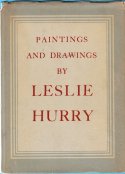
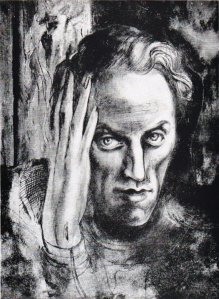

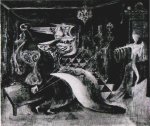



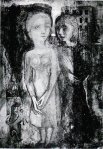
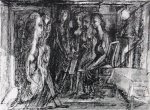

I think one problem in investigating Hurry as an easel painter is that his chief fame is that of a long and successful career as a theatre designer. In a previous life as a bookseller I had found the Lyndsay book and thought it would be a ready seller, either off the shelf or on line – it was in stock for years.
His nephew John Hurry Armstrong published a book or pamphlet on his uncle which I have never seen. John seems to have acted as an agent for him.
Later in his career Hurry did a lot of work for the Stratford Ontario Shakespeare Festival who mounted a substantial exhibition of his work accompanied by a useful, well-illustrated catalogue (1982) – Leslie Hurry: A Painter for the Stage (in English and French). It includes an essay and two poems (including the one you quoted from) by Lyndsay, a biographical essay, short pieces by Lilian Browse, John Hurry Armstrong, Gillian Raffles (of the Mercury Gallery – perhaps his agent), Tanya Moiseiwitsch, Desmond Heelyey, Peter Hall and others, a catalogue of the paintings and drawings in the exhibition. At the back is a portfolio of 10 loose colour plates.
The Folio Society Richard III is illustrated by Hurry.
Many thanks for this, John. Very helpful and much appreciated. I would think that your judgement here is very sound. Though for me, it’s the non-theatre stuff that does the business!
A few of the loose colour prints at the back are non- theatre work – Palace Dream, 1942 watercolour (Middlesborough Art Gallery), Egypt/Israel War, 1973(Artist’s estate) and one or two others. And a colour self portrait on the front cover (not the one you illustrate). Texts include a poem by Hurry, The Journey. >
The theatre work was just a job which he preferred to teaching, the trouble is he was one of the greatest theatre designers, so people now ignore his best body of work, the non-theatre paintings. I have enough for a good museum exhibition, but I am struggling to talk anyone into it – I also tried to get interest from publishers in a monograph, without success – one day……….
Thanks. What a shame! But yes, one day, let’s hope …
Could the Pallant House Gallery in Chichester be interested? Very much their period.
they have been thinking about it for the last few years and may well decide to do an exhibition at some stage
Sorry to be so late …. Hurry featured quite prominently in the 1987 exhibition (at the Barbican), ‘Paradise Lost: The Neo-Romantics in Britain 1935-55′, and there’s a section on him in David Mellors’ catalogue for the show (Lund Humphries), where ‘This Extraordinary Year 1945’ is illustrated in colour, along with other works of his.
Thank you, Paul. I didn’t know that, and it’s really very useful – appreciated. No “late” on this blog! Stuff keeps coming round, again and again …. And gradually we get a fuller picture.
I can’t get Pallant House [or any other museum] interested in a Leslie Hurry exhibition, so I have decided to go it alone and publish 3 small format hardback books/catalogues on his paintings:
1. Oil paintings – 1928-1978;
2. Early paintings on paper – 1942-1959;
3. Later paintings on paper – 1960-78.
No theatre designs, just his paintings – about 70 illustrated.
Only a brief biography, mainly photos – nothing fancy, but better than nothing.
They should be printed by mid-June 2020 – Styca Publishing – http://www.styca.com
That Barbican Neo-Romantic exhibition in 1987 was the first time I saw his paintings – a revelation – I went about 6 times.
thanks,
keith
Thanks, Keith. That’s excellent news – I mean, regarding the books, not the lack of interest in a proposed exhibition. All power to your elbow!